Chat 11
The Answer to
Chat 10 picture quiz is:- A tie press
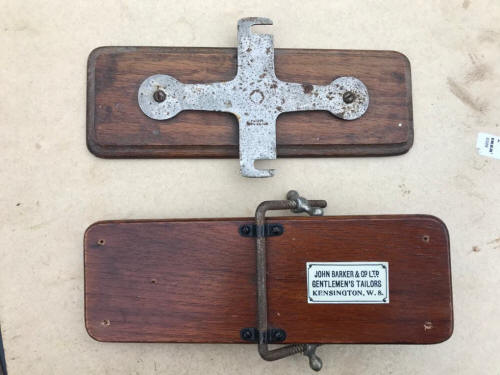
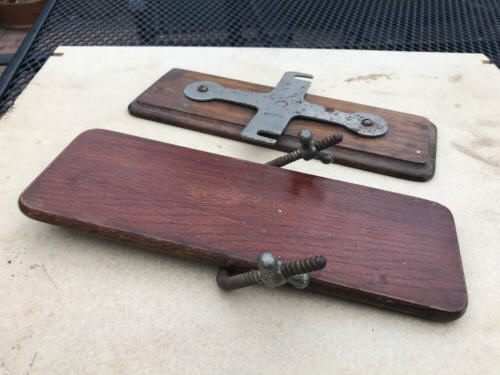
If you enjoyed the story in Chat 10, My Garmin GPS Isn’t Working!, where we did a great wind up on Brian Slack, have another look as my brother John sent me the photographs he took at the time and these make it even better.
I'm, always pleased to have your contributions to this chat. It is the Burton Sections chat. If I've got plenty of material I can spread it out over several issues. If you don't send me anything there will be fewer or even no chats, I can't/won't write it all. Eddy
Below is a simple example of writing an easy article than any of you might be able to do. It was sent out by my friend Tony Harris to the members of the Northampton and Leicester branch of the Norton Owners Club. It is good if you have a photo you can email to me but it works OK without. Eddy
Hi lads
Hope you're all putting plenty of sun cream on. Right a little
teaser then.
Who has a picture of themselves on their first ROAD bike with
some information about it then. Yes, I know the camera had not
been invented when some of you started riding.
I will start it off with one here of myself.
This was taken about 1971 when I was
16/17 years old. The bike is a Honda CB92 125 which I paid £7
10s for from Exhall near Coventry. This I road everywhere for
about 3 years.
It was a fabulous little bike with
huge brakes made of Magnesium, main bearings bigger than a 650
Triumph and roller big ends. It revved to 12k and spent most of
its life at those revs.
It was single overhead cam and was ultra reliable pushing some
15BHP. Not bad for a 1965 bike. This is the same as the modern
125 produce. If you could find one now they go from about £8000
- £10,000, if only eh. Its also the only bike I can
remember the registration number of. This includes bikes I have
had for over 40 years, strange eh.
I will share any embarrassing pictures you send me with the rest of the group if that's ok. This is when I had hair and is not some super model sitting on the bike. ����. Cheers, Tony
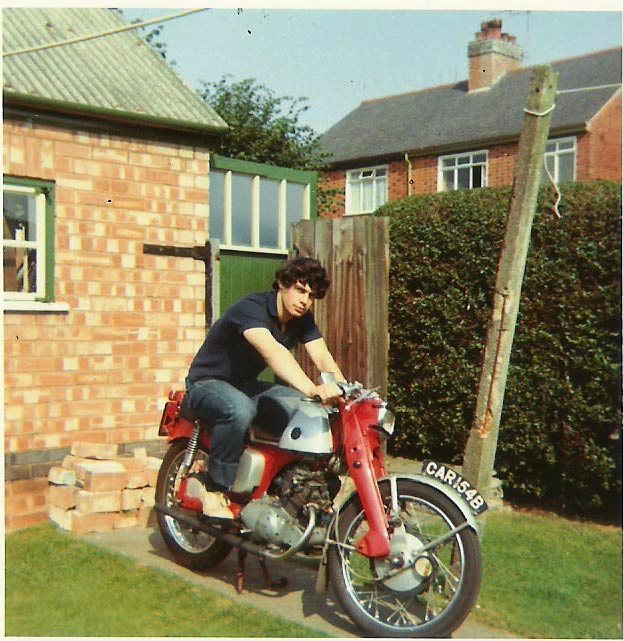
One of my favourite Rallies was the Irish
National Rally which was initially based in Cork at the
Metropole Hotel almost next door to where the Ferry docked
further down the key back then in 1978. I must have made ten or
eleven since altogether and would still enjoy it today, except
unless you are a regular you cannot get an entry. With
Pat and Shelley Robotham we have tried twice in recent
years to gain entry without success, so last year we ended up
taking part in the Rudge Club Camping week based in Skibereen.
The year prior to this we again did the Colombres Rally, we
first did this in 2010. It is not far south of Santander with an
overnight ferry crossing from Portsmouth. A very good scenic
event with excellent EU funded road surfaces unlike Ireland as
it was, although Irish roads have improved with the same funding
when we went last year. Spain has much cheaper daily costs i.e.
food and drinks if that is your scene. Good hotels are utilised
all based on the Parra Hotel who’s owner is a keen vintage
motorcycle enthusiast with a museum in the basement. It is held
around and over the
Pecos mountains region, not quite as scenic as Ireland, but
warmer, not so wet and about half the cost of the Irish.
My favourite ride must occur in Ireland
along with a few
others over there I should add!! Talking riding rather than
scenery the most enjoyable for me has been The Healy Pass.
Staying in Kenmare Bay Hotel which is on the southern end of the
Ring of Kerry a superb ride with very good scenery is ahead, one
leaves Kenmare up through the market square and right at the top
of the main street heading towards the Ring of Kerry, but just
over the Kenmare River bridge you turn sharp left heading
towards Glengariff.
The main road can be followed, but a more scenic route is turn
left at the Burial ground and up over very steep and tricky
narrow roads over the Mountain and then down into Glengariff.
In Glengariff a right turn is taken towards Adrigole
about eight, or nine miles of climbing wide coastal road. A
sharp right is taken in Adrigole and after about two or three
miles you find the lower reaches of the Healy Pass which you see
rising in front of you the summit just over a mile away as the
crow flies, but further on the road. Hammer time if you are on a
fast nimble bike like the Mk1 KTT Velocette, as it is just like
many of the Continental passes with many 180 degree bends and
many between a slight curve and 180 degree as it climbs upwards.
A delight if you enjoy riding
a responsive machine and testing your self. The
visibility is very good with no fences and very few places where
you cannot see what is coming ahead including other traffic. At
the summit is a gift shop cum café and just past it a viewing
area where you can look back down the pass to see others
doing their thing. The run down the other side is a more
sedate steady affair with glimpses of the coast ahead, but
hedges and caution are needed. When you reach the coast road you
can turn right back to Kenmare, or left to see the rest of the
lovely scenery of the Beara peninsular. Returning down the
coastal road through Castletownbere, Adrigole and Glengariff. I
was delighted when The Rudge Club run took us that way last
year, but not quite the same on my Honda 400/4 as on the Mk1
Velocette, but it could be I am getting much older, in fact, oh
never mind I can’t remember anyway?? I have ridden the Pass from
the opposite direction as well a couple of times, but going down
is not half as interesting as going up, to me anyway.
Pat Robotham posted:-
Motorcycle problem solving. A chance for the whole section to
help solve my immediate problem with the brake light switch on
my 1959 VH Ariel.
Now
I recon I am a reasonably intelligent chap, and a reasonable
good amateur mechanic., with enough knowledge skills and
experience to keep the type of bikes I choose to ride working
OK. As we are all kicking our heels at home at the moment I
decided to check over the old VH to get it really ready for when
we can all ride again.
I
noticed that the brake light wasn't working so set out to put
things right.. I noticed that the spring that pulls on the
switch had become disconnected so fixed that. Still no
brake light.
Must be the bulb took it out checked it seemed ok and then
tested both filaments lit on the battery, cleaned up the
terminals in the light. Test still nothing.
check and remake connections to the rear light still nothing. It
must be a bad earth. Check the rear light , it works so
earth to lamp ok, still no brake light.
Break the connections to the rear light and swap them over,
still get a rear light on the other filament but nothing from
the brake light. Check operation of brake light switch using
multi meter and it is switching about 11.6 volts on actuating
the pedal. Bike has not run for a few weeks so not surprised
battery is not up to maximum. So switch seems to be working.
Concentrate on this next bit. reconnect brake light wire into circuit and depress pedal, NOTHING, keeping pedal depressed measure voltage at the wire junction NO VOLTAGE at all. Disconnect brake light side of that wire junction and depress pedal and switch delivers 11.6 volts. So with the brake light connected into the circuit with the brake light switch, current does not flow, but disconnect the light and it will flow through my multi meter. Over to you guys or maybe it is simply magic. Pat
Email your suggestions to me at edgrew@virginmedia.com and I can post them on the chat so that everyone can see the suggestions and maybe learn something from them.
(If come from or live near Burton you will a bit about beer. John's story about beer has an aeronautical twist. Eddy.)
John Grew posted:-
At dawn on June 6, 1944, the amphibious
invasion of Normandy began. Allied troops from Britain, Canada,
and America landed on the French coast to start the months-long
Battle of Normandy. As the invasion continued, supplies became
scarce, and there was one item that the troops noticed a
distinct lack of: beer.
After D-Day, it was hard to get any supplies to the front-line troops and luxuries such as beer were low on the list. With the governments not able or willing to provide alcohol to the troops, they had to take matters into their own hands. Military personnel who were able to get wine and other luxuries from locals would source these items for the rest of the men.
To get the beer from Britain to the
troops in France, modification XXX was born. This modification
was performed by pilots on the Spitfire Mk IX which had pylons
under the wings. These pylons were generally used for bombs and
fuel tanks, but could also be used for beer.
To prepare for a beer run, the fuel
tanks attached to the pylons would be steam cleaned by ground
crews. The tanks would then be filled with beer from kegs
provided by a range of breweries and marked with XXX. Each of
these tanks had a capacity of 45 gallons allowing one Spitfire
to deliver 90 gallons of beer to the front.
The modification to the fuel tanks is
considered to be semi-official. The reason for this designation
is the photograph sent to newspapers by the Air Ministry. The
picture shows a tank being filled with two kegs worth of beer
while the pilot relaxes on the wing. Even if this practice was
not officially sanctioned by the Ministry, they did nothing to
stop it.
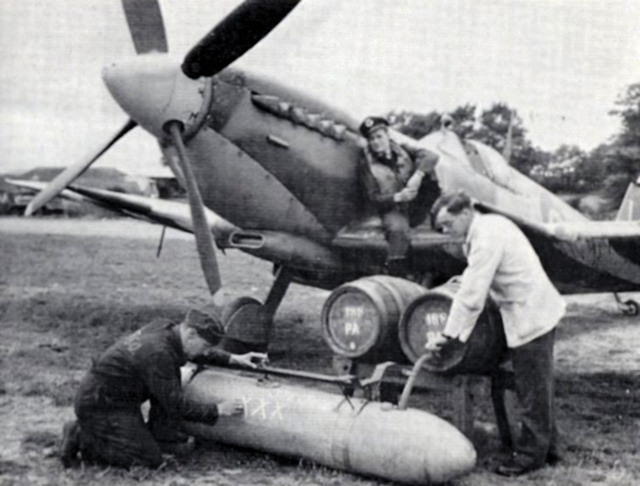
As the demand for beer increased, the
RAF pilots had to look beyond the Spitfire. The Hawker Typhoon
was able to carry greater loads than the Spitfire and was the
next plane to have modified fuel tanks. The use of the Typhoon
was not as widespread as the Spitfire for this purpose because
new American pilots often mistook the plane for a German
Focke-Wulf 190.
This mistake resulted in Typhoons being
attacked by the American Thunderbolt pilots. According to Group
Captain Scott of the RAF, one Typhoon was attacked twice in a
single day. During one of the runs, the tanks had to be dropped
into the English Channel so the pilot could perform evasive
action.
While the beer runs using the fuel tanks
were initially successful, the content of the tanks had a
metallic taste. The first few runs would also taste slightly of
fuel which was unpleasant for all involved. To combat this
issue, a new modification to the Spitfire was created.
The wing pylons of the Spitfire Mk IX
were modified to carry beer kegs. This ensured that everyone
knew what was being carried, and also eradicated the metallic
taste. To make the kegs more aerodynamic, nose cones were added
to them.
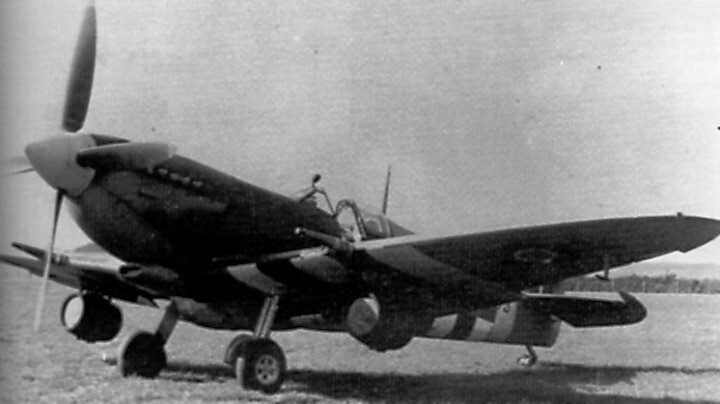
The kegs carried less beer than the fuel
tanks, but it tasted better and would be chilled by the altitude
of the flight across the Channel.

When American pilots learned of the beer
runs, they started to make them as well. However, they were not
satisfied with just taking beer to the troops. Iced custard and
ice-cream were added to the luxuries brought by pilots to the
rest of the troops.
These beer runs could not last forever
and they were eventually stopped. The British breweries were
approached by HMS Customs and Excise and warned that they were
violating the law. Providing free beer to the troops in France
in this manner bypassed export tax which the breweries were
liable for.
Picture quiz photograph from John Grew:- What is this contraption for? Answers to me at edgrew@virginmedia.com
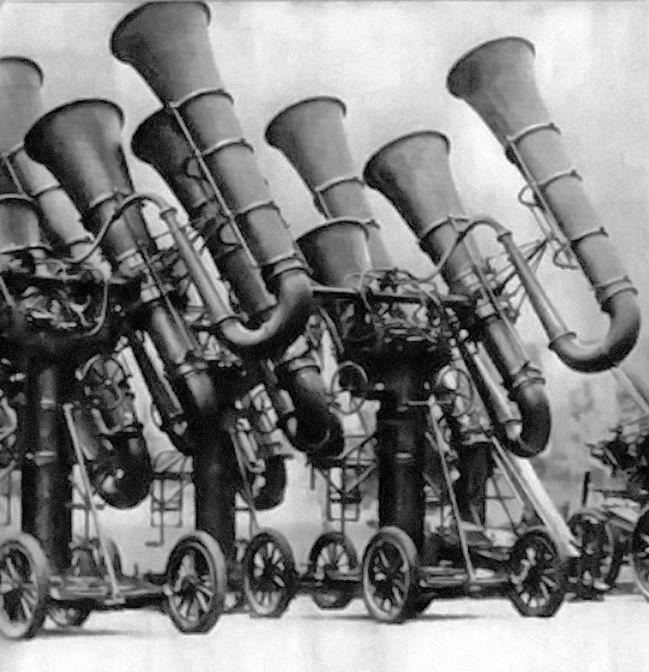
Regards, Eddy.
